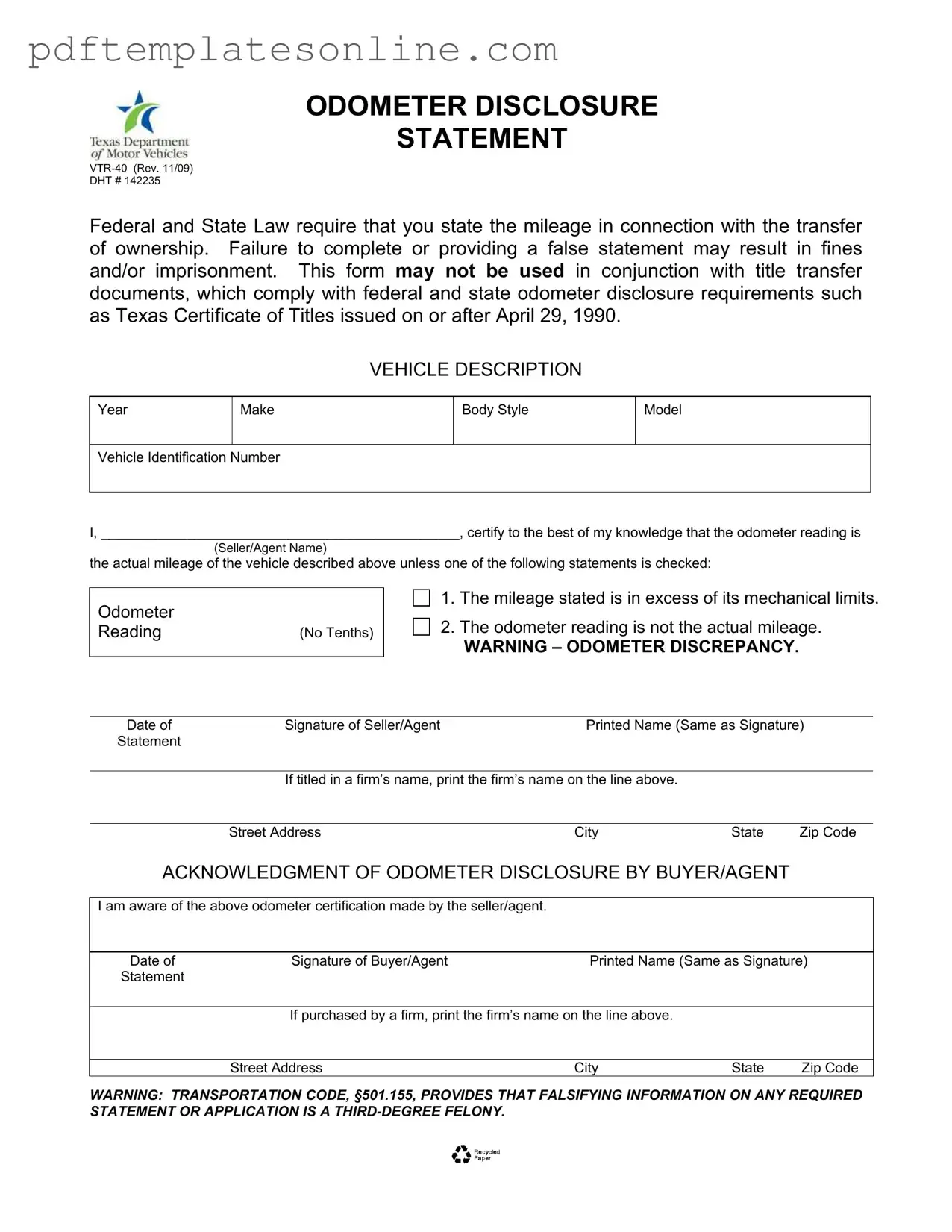Filling out the Texas Odometer Statement form can be straightforward, but mistakes often occur. One common error is failing to provide the correct vehicle identification number (VIN). The VIN is crucial for identifying the vehicle. If this number is incorrect or missing, it can lead to confusion and complications during the title transfer process.
Another frequent mistake is not entering the odometer reading accurately. The form requires the mileage to be stated without tenths. Many people mistakenly include tenths, which can invalidate the statement. Always double-check the odometer reading to ensure it matches the actual mileage.
People also often overlook the requirement to check one of the statements regarding the odometer reading. If the mileage is in excess of its mechanical limits or is not the actual mileage, the appropriate box must be checked. Failing to do this can lead to legal issues down the line.
Signature errors are another area where mistakes happen. The seller or agent must sign the form, and the printed name should match the signature. In some cases, individuals forget to sign or print their name, which can delay the process.
Additionally, providing an incorrect address can create problems. The form requires the seller's and buyer's addresses. If these are incorrect or incomplete, it may hinder communication regarding the title transfer.
Another mistake involves the acknowledgment section. Buyers or agents must sign this section to confirm awareness of the odometer certification. Skipping this step can result in complications later in the process.
Some individuals may not realize that the form cannot be used alongside other title transfer documents. This misunderstanding can lead to the use of incorrect forms, which may not meet federal and state requirements.
Failing to understand the legal implications of falsifying information is a serious mistake. The form includes a warning about the consequences of providing false statements. Ignoring this can lead to severe penalties, including fines or imprisonment.
Finally, it’s important to remember that if the vehicle is titled in a firm's name, the firm’s name must be printed on the appropriate lines. Omitting this detail can cause the form to be rejected.
